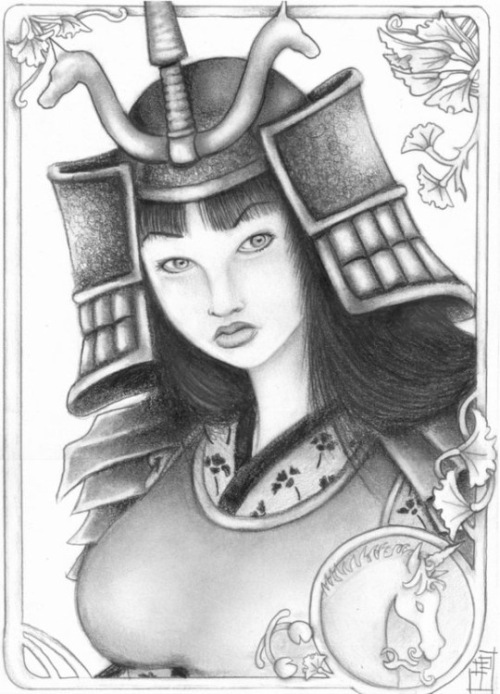Greetings,
I am Muriko Tanada Osada, of the Osada Clan.
I welcome you to the Empires. Take the time to look about and take a journey of our history to our curent tribunals. It is filled with beauty and art and the pride of our achievements
.
In the year 645, a great reform overtook our nation called the Taika no Kaishan, aimed to strenghten our Emperor's power. This was done to seperate our own idenity with other cultures and thus start a new Era for us. New Clans arose and fell as the reform took hold, it was a mighty step for our nation and it succeeded quite well. The Most powerful of these clans came about, the Fujiwara Clan and held great influence. The reform spanned over 25 years.
In the year 710, the Imperial Court builds a new Capital to mark the reform success. It was modeled after Chang-an in China at Nara. The Emperor's were Shinto chiefs that patronize Buddhism in the belief that its teachings will bring about a peaceful society and protect the state.
In 794 Imperial court moves to Heiankyo (now Kyoto) to escape domination of Nara's Buddhist establishment. Official contacts with China stop in 838. Flowering of classical Japanese culture aided by invention of kana (syllabary for writing Japanese language). Court women produce the best of era's literature.
During the 900's, the T'ang loses power and the Fujiwara Clan takes control. The Fujiwara family controlled the political scene of the Heian period over several centuries through strategic intermarriages with the imperial family and by occupying all the important political offices in Kyoto and the major provinces. The power of the clan reached its peak with Fujiwara Michinaga in the year 1016. After Michinaga, however, the ability of the Fujiwara leaders began to decline, and public order could not be maintained. The Fujiwara supremacy came to an end in 1068 when the new emperor Go-Sanjo was determined to rule the country by himself, and the Fujiwara failed to control him.
In the year 1086 Go-Sanjo abdicated but continued to rule from behind the political stage. This new form of government was called Insei government. Insei emperors exerted political power from 1086 until 1156 when Taira Kiyomori became the new leader of Japan.
The Fisrt Shogun Rise to Power
Eastern Hogen Disturbance in 1156. Go-Shirakawa sought to strengthen imperial throne who allied with Taira Kiyomori & Minamoto Yoshitomo. The civil unrest has broughtan unstablablity into the nation ruling class. The Fujiwara Clan strength was reduced.
During the Heiji Disturbance of 1160, a struggle for power between the two families, Taira Kiyomori evolved as the leader of Japan by defeated Minamoto Yoshitomo and ruled the country from 1168 to 1178 through the emperor. The major threats with which he was confronted were not only the rivalling Minamoto but also the increasingly militant Buddhist monasteries which frequently led wars between each other and disturbed public order.
After Kiyomori's death, the Taira and Minamoto clans fought a deciding war for supremacy, the Gempei War, which lasted from 1180 to 1185. By the end of the war, the Minamoto were able to put an end to Taira supremacy, and Minamoto Yoritomo succeeded. After eliminating all of his potential and acute enemies, including close family members.
In 1185, Court undergoes decline of power with rise of provincial bushi (warrior class). The glory of the Imperial Court has deminish and such social events decline. An era of beauty falls. Military government established in Kamakura by Minamoto no Yoritomo. The Emperor,is place as a figurehead, remains in Kyoto with the court aristocracy. Yoritomo made first shogun with hereditary rights in 1192
Bushi become new ruling class. A period of increased social rank and economic power for the samurai popularity of Zen Buddhism increased included practice of meditation; helped keep samurai in proper state of mind.
War comes to the Shogun in 1210, with the rise of the Genji Clan ,who was the 2nd most powerful clan and plunge the country into instability. Minamoto no Yoritomo is dead, many of the clans vie for the power of the Shogunate.
The Rise of Women to Power
According to Japanese Buddhist doctrine, women were inferior to men in terms of spiritual standing. In fact, a woman had no chance of being reborn into Western Paradise or into higher incarnations without first being reincarnated as a man. Also, Heian Confucianism reminded women of their three dependencies As a girl, she obeyed her father, As a woman, her husband or elder brother dominated her; Finally, as a widow, she deferred to her eldest son.
The Heian kuge woman led a very cloistered, immobile life. Except for the occasional carriage ride to view cherry blossoms or visit a temple, she was always indoors. Social custom also dictated that she remain constantly hidden behind a silk screen. While she could have any number of female attendants, she was supposed to remain hidden from any man except her father and husband. Yet, promiscuity was commonly accepted, even expected among both genders. In fact, “spinsters and virgins were unusual in well-born families. . . it was firmly believed that any girl who remained virgin for long had been possessed by an evil spirit,”.
All this changed when Tomoe Gozen, wife of a Minamoto general Kiso Yoshinaka, fights along side her husband in battle. There are several stories about her military prowess and several more about her demise. One account says she died along side her husband, another states she took his head so the enemy would not gain it and flung it and herself into the sea, and another said she took his head, disposed of it then died in a Buddhist convent where she had become a nun.
There was also Masako, the widow of the first shogun Minamoto Yoritomo, who was determined and schemed to destroy the Minamoto in favor of her clan, the Hojo.
Thus women came to be in power and Women were expected to show the same loyalty to her husband as he would show to his daimyo. On suicide, samurai women, and sometimes the whole household, were expected to follow their husband in death. Samurai women committed ojigi, which was a thrust through the throat with the aikuchi. (Not seppuku, which is the box cut, disembowelment done by male samurai).
The Nation Today
Many got close, and failed in the last 2 years. The seat of the Shogunate has been empty till a clan is powerful enough to claim it. Many Clans have emerged from the settling dust of the two greatest Clans warring. None knows the future, but hard times are still coming.....
(Historical note*: Sengoku period never came about, and thus we have our era)

